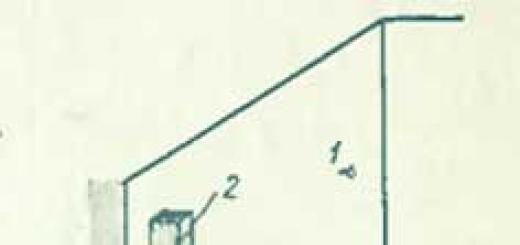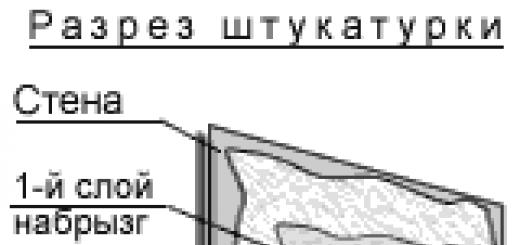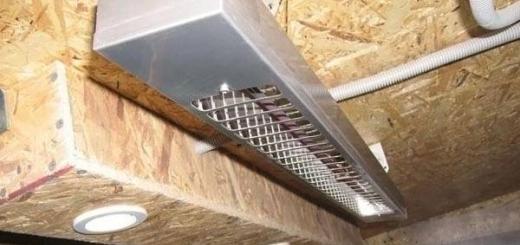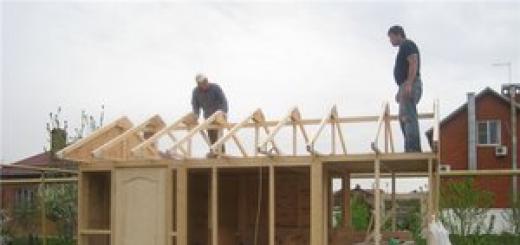Electric boilers are useful in areas without gas supply. They are lightweight, compact in size, and do not harm the environment. Such devices have a number of positive qualities:
- They are designed quite simply, provide a minimum of heat loss and a high efficiency during the heating season - about 99.5%;
- There is no need to place the equipment in a separate room of the building;
- The energy carrier does not need to be stored;
- Absolutely safe during operation: if a water leak occurs, the boiler simply turns off;
- There is no need to equip a chimney, since no substances are released into the environment during operation.
When compiling a rating of the best electric boilers intended for heating a private home, we took into account a large number of different factors - the manufacturer, productivity, the ability to provide the house with hot water, and not just heating, and efficiency. In addition, when developing this top 10 ranking, we also took into account user reviews. So we can say with confidence that the review included only the most popular and functional models, which also have a very reasonable price.
10. Protherm Scat RAY 12 KE/14

This product is distinguished by a very high efficiency factor - this figure for the boiler reaches 99.5%, and both water and antifreeze can be used as a coolant. The design is absolutely safe due to the use of a large number of the latest and original solutions: a thermal fuse is installed, frost protection is provided, and the pump is protected from overheating and from idling. In general, the brand of these boilers has long proven itself to be successful among Russian consumers. The model is available in eight modifications, differing from each other in power ratings - from 6 to 28 kW. The boiler has a storage boiler. Despite the fact that it belongs to a single-circuit product, it is possible to heat a certain amount of water in it. It is possible to connect a room regulator, after which the system will automatically maintain the most comfortable temperature at home.
The case has a liquid crystal display and a very informative display. The controls are intuitive, so you can figure it out quickly enough. The boiler does not need to be connected to a chimney; it operates from a standard household electrical outlet. Maintenance does not require special skills. The product is very reliable, as it has a self-diagnosis system and a large number of sensors that check the performance of all equipment elements. The boiler has a circulation pump and an expansion tank, so there is no need to install them outside the device.
Advantages:
- Works absolutely silently;
- All parameters are supported stably;
- High efficiency;
- Long service life;
- Reliability;
- Occupies a minimum amount of free space;
- There is an informative display.
Flaws:
- The thermostat is not included and will have to be purchased separately.

This equipment is perfect for making an individual heating system in a private home. The boiler has high power, thanks to which the room warms up to the set temperature within just a few hours. It can be used not only for residential, but also for industrial premises, the area of which is no more than 120 square meters.
If necessary, it can be connected to a heating system of the “warm floor” type; it is possible to connect a storage boiler. The body is made of thin sheet stainless steel. On its front side there is a convenient and extremely clear external control panel, equipped with an LED display, where you can easily adjust the temperature. The design includes a powerful and efficient microprocessor that ensures the accuracy of all changes in the heating system.
To extend the service life of the unit, the manufacturer equipped it with a number of protective systems - protection from overheating, from too high pressure in the system, from freezing, etc. The power changes smoothly, which prevents overloads. The kit includes an external temperature sensor that will transmit data to the microprocessor. This, in turn, will increase or decrease the temperature of the coolant.
Advantages:
- Significant heating area;
- Possibility of connection to the “warm floor” system;
- You can additionally purchase a hot water boiler;
- The expansion tank is equipped with a mechanical pressure gauge;
- Operates exclusively on 200 V.
Flaws:
- Expensive service;
- High price.
8. EVAN Next 5

It can be used for heating not only private houses, but also summer cottages, warehouses and even small commercial premises. Often, some people purchase such products as a backup heat source if a solid fuel or gas appliance is installed as the main one. By and large, such a boiler is a monoblock, where control elements and all the necessary automation are located under one body, including an expansion tank and a circulation pump. There is a built-in thermostat, due to which the temperature of the coolant can range from 30 to 85 degrees. Three-stage equipment power control. In order to ensure maximum safety when heating the coolant to a set temperature, the thermostat turns off the power to the device, and when the temperature drops below the set limit, it will restart the device.
In order to further protect the device from overheating, it has a built-in emergency thermal switch of a self-resetting type. It is triggered when the temperature in the system rises to 92 degrees. The heating element is made of stainless steel, which significantly extends its service life. The design of the heating element is block-based, so if necessary, this part is very easy to replace. If desired, the boiler can be connected to a water heated floor system, and a unit can be installed that provides remote control of this device.
Advantages:
- Acceptable cost of the unit;
- Very high quality of components and assembly;
- It is possible to install additional elements;
- Automation works instantly;
- Can be connected to a heated floor system.
Flaws:
- The case is quite dirty - fingerprints and dust are visible on it.

This domestic product is one of the most budget models presented in our rating of the best electric boilers. The main distinguishing feature of the unit is the absence of a housing, but at the same time it retains all the basic qualities and functions. The temperature range is from 30 to 85 degrees - which is quite enough even for the most severe climatic conditions. If necessary, you can connect an external thermostat with a remote control module to the device, but you will have to purchase it separately.
The thermostat is automatic - it is activated when the coolant temperature drops below the set value. There is an overheat protection system: the boiler will turn off when the water warms up to 92 degrees. The heating element is made of thick-walled stainless steel, characterized by a long service life. The device weighs only 15 kg, the maximum pressure in the system is about 4.5 bar, and is designed for connection to a single-phase line with a voltage of 220 V.
Advantages:
- Reliable stainless steel heating elements;
- Does not require maintenance during the entire service life;
- Simple device;
- Low price.
Flaws:
- The need to purchase additional devices such as a thermostat;
- Lack of housing.

Medium power equipment - consumes only about 9 kW, takes up little space, and is mounted on the wall. The boiler can be used both for heating and for a hot water supply system due to the additional installation of a boiler. When installing heating equipment, you will have to install an expansion tank and a circulation pump, since these elements are missing in the boiler.
There is a reliable and durable automatic system that allows you to maintain a comfortable temperature in the room - no more than 30 degrees. The temperature sensor can be placed either close to the installation or at a distance of up to 10 meters from it. There is a stepwise power adjustment - 30, 60 and 100%. The heating element and heat exchanger are made of high-quality stainless steel; water or antifreeze can be used as a coolant. Communication of heating elements is carried out using semiconductor structures, which increases the life of the device and allows it to operate completely silently. When turned on, the contacts do not burn and no interference occurs. The boiler is absolutely safe; it has several sensors that monitor the condition of the main systems.
Advantages:
- Perfectly withstands low voltage – up to 20%;
- The kit includes a temperature control sensor;
- The control is located on remote elements;
- Functions without failures;
- Heated area up to 65 square meters;
- Pleasant appearance and small overall dimensions;
- Connects to both single-phase and three-phase networks;
- The pump can operate in both automatic and forced mode.
Flaws:
- The magnetic starter hums a little, the issue can be solved by configuring the device;
- Difficult to connect due to confusing phase, neutral and ground locations.

The boiler is designed quite simply, which makes it easier to install and connect, and even when installing a heated floor system, you will not have to install additional control valves. The unit weighs little and has small overall dimensions, easy access to the heating elements, making boiler maintenance much easier. The boiler has convenient connecting connectors for all electronic units.
The device is equipped with a large number of fairly accurate sensors; if necessary, you can connect a weekly thermostat to use the equipment in fully automatic mode. It has a self-diagnosis system and internal memory for individual settings. In such boilers, you can use a GSM module, due to which all basic operations will be carried out from a mobile phone. The boiler is very reliable; all heating elements are made from stainless steel tubes with a diameter of 7.4 mm.
Advantages:
- Availability of a reliable overheating protection system;
- The kit includes a room thermostat;
- Small dimensions;
- Easy to install.
Flaws:
- It makes a little noise during operation;
- The design does not include an expansion tank or circulation pump.
4.ZOTA 12 Economy

Allows you to provide sufficient heat to residential and industrial premises, the area of which does not exceed 480 square meters. m. These products are suitable for systems with natural and forced circulation of coolant. The boiler is single-circuit and is not designed to supply hot water to the water supply system. It takes up the minimum amount of free space in the room. The heating elements are made using original technology; they are made from stainless steel tubes and can withstand any thermal load well. The boiler and the device control unit are housed in different housings. The control panel can operate both on power relays (they operate absolutely silently) and on magnetic starters, depending on the model modification of the device. In addition, the products are available in different power options - from 3 to 15 kW.
A sensor can be built into the control panel of the device, providing automatic adjustment of the air temperature in the room within the range from +10 to +35 degrees. The coolant temperature at the boiler outlet is in the range from +40 to +90. There are also automatically switched power levels, due to which the consumed electricity is consumed more economically. The boiler is equipped with a system for automatic diagnostics and rotation of heating and power elements.
Advantages:
- Suitable for absolutely any heating systems;
- Stylish appearance;
- Long service life;
- High quality components;
- Convenient and simple controls;
- Reliability and efficiency of the device.
Flaws:
- When the pressure in a forced-type system decreases, it begins to hum a little.
3. Reco 6P

Designed to create comfortable living conditions in industrial and residential premises, the area of which does not exceed 60 square meters. m. The products are absolutely environmentally friendly; during operation they do not emit combustion products, so the likelihood of carbon monoxide poisoning is zero. The boiler can operate from various networks - 220 and 380 V. Power adjustment is carried out both manually and automatically. The electric boiler is also characterized by an attractive and stylish appearance. This is a fairly reliable design - the expansion tank and all heating elements are made of high-quality stainless steel. The functionality has been expanded: you can program the device’s operating schedule for a whole week; it also has an energy consumption meter, so the consumer will always be aware of how much electricity this heating device has consumed.
Switching of heating elements here is carried out thanks to semiconductor systems, which have a significant service life, operate absolutely silently, no burning of contacts or occurrence of radio interference has been detected. Power adjustment occurs without phase imbalance. All elements function normally even at reduced voltage. The boiler can be built into a heated floor system; both water and antifreeze are used as a coolant. The product is controlled through a functional panel equipped with a liquid crystal display with all the necessary indications.
Advantages:
- Intelligent installation control system;
- The system independently collects and processes data regarding the temperature of the coolant and air in the room;
- Electricity consumption meter installed;
- Groups of heating elements can be controlled automatically.
Flaws:
- Not suitable for large areas.

It takes an honorable second place in the ranking of electric boilers. By and large, this unit is a boiler room in miniature; it is distinguished by domestic production, mechanical control, which is very easy to understand. Can be used for both residential and industrial premises; the boiler is equipped with a membrane-type expansion tank. It is designed for an area of up to 180 square meters.
The heating elements are made of stainless steel; water or antifreeze can be poured into the heating system. The device perfectly withstands voltage surges and phase imbalance. The kit includes a remote programmer that allows you to store a weekly operating cycle in the device’s memory. The boiler is absolutely safe due to the presence of a large number of different types of sensors: pressure, temperature, a protection system against short circuits and overloads in the electrical network. The unit is very economical and is equipped with light and sound alarms in case of problems.
The cottage can be heated using boiler equipment using wood, gas or liquid fuel. But it is often preferable to use an electric heating boiler for a private home, which is an order of magnitude less explosive and easy to maintain. To install it, you do not need permits or special installation skills. However, the electric boiler also has its disadvantages. You need to choose it wisely, weighing all the pros and cons of a particular model.
Description and principle of operation of boilers
The operation of an electric boiler is based on the principle of converting network electricity into thermal energy. Next, with the help of the latter, the coolant (water or antifreeze) is heated. At the same time, losses during the transformation of electricity into heat are reduced in electric boilers to a minimum of 1–3%. The efficiency of these heating units reaches 97–99%.
A classic electric boiler consists of:
Control and protection unit;
Heat exchanger with heating element;
Expansion tank;
Circulation pump.
Device diagram
When electricity is supplied to the heating element, the coolant is heated, which is then sent to the heating radiators of the house using a circulation pump. If the boiler is used in parallel to heat water in the domestic hot water supply, then an indirect heating boiler is additionally installed. In the second case, it is also possible to have two separate circuits, each with its own heat exchanger - one for heating, the second for water supply.
Types of electric boilers
Depending on the installation site, electric boilers can be floor-mounted or wall-mounted. Typically this is compact equipment with one coolant heating circuit for heating an individual home. But there are also two- and three-circuit models. In them, one line is used for the heating system, and the second and third for hot water supply or “warm floor” or pool.

The principle of operation of a boiler with heating elements and electrode
All electric boilers installed in private homes are divided into three types according to the type of heating element. They can be heating elements, electrode or induction. In all cases, electricity is used as “fuel” to heat the house. But the method of heating water in boilers of different modifications is somewhat different.
With tenami
A tubular electric heater (TEH) is made in the form of a metal tube with a conductive thread twisted into a spiral inside. By design, this is a regular boiler. Only in an electric heating boiler for a private house is it large in length and diameter. For heating boilers, this element is often made from several tubes and even as part of a block of heating elements. The thermal power required here is much higher than in a kettle.
The thread in the heating element of a heating boiler is made of nichrome or tungsten, which have high electrical resistance. In this case, between the spiral and the walls of the tube there is an insulating layer of quartz sand. This is an excellent dielectric that transfers heat from the filament to the coolant with minimal losses.
Heating elements are cheap, but they burn out quite quickly. Electric boilers with them have high energy consumption. Plus, salt deposits, which gradually and inevitably build up on the pipes, slow down the process of heating water for heating radiators in a private home. Once a year, this scale in such boilers has to be cleaned off or the heating elements in them must be completely changed.
Electrode
In electrode water heaters, the coolant is heated by supplying electric current to two surfaces separated by water (most often these are plates). This type of heating element for electric boilers consumes less electricity. However, scale is a problem here too.
The main disadvantage of electrode electric boilers is their demands on the composition of water. Quite a lot of salts must be present in it, otherwise the coolant will have too low conductivity. It will simply be impossible to heat it to the temperatures required for the heating system.
Induction
An electric heating boiler using induction heating technology is more economical than the two types described above. In it, the coolant for radiators in the house is heated using electromagnetic induction. This boiler is in many ways reminiscent of its electrode counterpart. Only the heating element is larger here. But it is more durable and more powerful.
Induction heater device
Compared to other types, induction electric boilers are more energy efficient, but more expensive. Plus, the heating rate of water in them is slightly lower. These are like the dimensions of a profiled sheet. A large sheet is more difficult to cut, but in many cases the roof is covered with it faster. However, there are also types of house roofs for which it is not at all suitable. Likewise, an induction boiler is effective, but expensive and does not always meet the requirements of the home heating system being created.
Advantages and disadvantages of electric boilers
You can install an electric heating boiler either in a special boiler room or directly in the kitchen. The model range is quite extensive. Heating equipment stores have designer compact options that look great in the interior.
Among the main advantages of an electric boiler, the following should be noted:
No ash, soot and exhaust gases;
Full autonomy of equipment operation;
Ease of installation, maintenance and management;
Minimum noise (maximum - only the sounds of relay clicks in the automation unit can be heard);
Availability of safety elements that turn off the electricity supply if there is no water in the heat exchanger;
High efficiency – up to 99% depending on the model;
Relatively low price of heating equipment.
The boiler in question does not need a chimney. The fuel for it is electricity, which enters the house and the “firebox” of the heater through wires. A woodcutter is not required here by definition.
Among the disadvantages, an electric boiler intended for private homes has three significant disadvantages:
There is a danger of electric shock;
Requirement for water;
High power consumption.
In some cases, the water must be as clean as possible, and in others – with a high salt content. The composition of the coolant must comply with the requirements of the water heater manufacturer. Otherwise, this equipment for heating a private country house will quickly fail. This foam block size can be almost anything, and then it can be cut with a hacksaw. This will not work with water for an electric heating heater.
The disadvantage of electricity is the high cost
How to choose a boiler
To choose the right electric boiler for your home, you don’t need to have any special knowledge of heating engineering. Its power is selected based on 1 kW per 10 square meters of cottage area. Plus you need to add 10–20% in reserve. You should always leave a reserve. Even ondulin or slate for roofing are taken with a small margin for scraps.
The main point in choosing and installing the boiler in question is the availability of electrical power. In most cases, about 8–10 kW is required. And usually private housing is initially connected to networks that are designed for such power consumption.

Make the right choice
But for more powerful water heaters, the existing power may not be enough. And energy workers may have serious problems obtaining additional capacity. Moreover, even if this is possible, it will cost a considerable amount. There is no need to go to government agencies for permits, but obtaining technical conditions from the energy resource supply company is often problematic.
It is recommended to organize heating of a private house using electricity only when the cottage is small or there is no main gas nearby. In these cases, this option is the most optimal. In other situations, an electric boiler is suitable only as an additional heat source. It consumes a lot of electricity, and the bills from energy companies will be large. It is best to install such equipment only for short-term or auxiliary heating of water.
Choosing an electric boiler is not difficult. You just need to know how to choose the power of the equipment, the type of heating element and, no less important, a reliable company. Next, we will look at all the main nuances so that you know how to choose an electric boiler for heating a house, cottage or even apartment. Which electric boiler is better, only you can determine for yourself, based on the data provided and the distinctive features of the types of heaters being compared.
Heater power
The first and most important selection criterion is the power of the equipment. This parameter is determined depending on the area of a private house or apartment. Typically, the following formula is used in calculations:
W= (40*Vroom+Qwindow+Qdoor)*k ,
- W - design power of the electric boiler;
- 40 – average value of the required equipment power per 1 m 3 of room, W;
- Vroom - the total volume of heated space (all rooms in a house or apartment), calculated as the total area of the housing multiplied by the height of the ceilings;
- Qwindows - heat loss through windows (100 W per window);
- Qdv – heat loss on the door (200 W per door);
- k – coefficient of location of the region (southern strip – 0.7-0.9; European and central part – 1.2-1.4; northern and eastern – 1.8-2).
This formula is suitable if you need to choose an electric boiler based on power for heating an apartment. As for a private house or cottage, when making calculations you need to multiply the final value by 1.5. An additional coefficient takes into account heat loss through the ceiling and floor.
Heating element type
The second, no less important criterion for choosing an electric boiler is the method of heating water for heating. Today there are heating elements, induction and electrode boilers.
The first ones are found most often in shop windows. They can be either floor or wall (mounted). Equipment with a heating element inside is the cheapest and can be used both in private homes and in apartments with a voltage of 220V or 380V. The disadvantage of this type of electric boilers is the formation of scale on the tubular heaters. In addition, the power of one electric boiler may not be enough for a two-story house, and installing several heaters is not always possible due to their size.
In this regard, choosing an induction boiler is a more reasonable decision. Due to their small dimensions (seen in the photo below), such heaters can be connected to one heating system, which will increase its power to the required value. The only obstacle is the higher price of the equipment. An induction electric boiler can be chosen for heating a cottage with an impressive area. A very important advantage of induction appliances is that they are the most economical, which is especially important in spacious houses. 
Well, the last type of heater is electrode. Such devices are considered the safest, but at the same time the most demanding of the coolant - water. In terms of cost, you may not feel much difference, but still, most often the choice of an electric boiler with an ion heating method is made for private houses and country houses. 
Video instructions on how to choose an electric boiler and which one is better based on the main indicators:
Review from a specialist
The best companies
A lot will depend on the correct choice of brand of device - the durability of the heating system, quality of work, safety and, of course, the cost of the electric boiler. Now we will tell you which brand of electric boiler is better to choose in 2017, so as not to overpay and have peace of mind about your purchase. 
Today, Bosch, Vaillant and Dakon are considered the best boiler manufacturers. A little cheaper, but still of good quality, equipment from Kospel and Protherm. The domestic leader in the production of wall-mounted electric boilers is the RusNit company, which specializes in the production of both household and industrial models.
From my own experience, I would like to say that 4 years ago I was advised to choose a double-circuit electric boiler from Protherm. During this time, the device never failed and at the same time, the price was one of the cheapest in the store, so my review is that “Proterm” is the best manufacturer of household heating units.
Additional features
If you decide to choose a good electric boiler for heating a private house or apartment, then pay attention to the presence of several very important functions:
- The presence of a multifunctional control system, which is clearly displayed on the display. Your unit should be equipped with temperature and pressure sensors, as well as the ability to continuously adjust the water temperature. If the pressure in the system drops, you will be able to notice it in a timely manner and correct the situation as soon as possible.
- Possibility of automatic power selection for heating operation. To save energy, the boiler will be able to independently change the heating power during operation.
- Possibility of using an electric boiler for hot water supply at home. Most modern models of equipment can be used not only as heating equipment, but also as a boiler. It’s very convenient, but energy consumption, as you understand, increases.
Consideration of the main types of devices
These are the parameters used to independently select electric boilers. We hope that now you know how to choose the right electric boiler for heating a house, apartment or cottage and, just as important, which companies are best to choose in 2017!
Also read:
Electric heating boilers are in steady demand among owners of private houses, since it is not advisable to use powerful heating equipment in all rooms. And often, any other sources other than electricity are simply not available - and then it is much easier to provide a cottage with electricity than to supply gas to it. You can also choose a solid fuel boiler, but solid fuel requires both storage and delivery space, while electricity is always at hand.
You can purchase an electric boiler “Proterm” or any other popular and reliable manufacturer from our company. Here you will find many types of heating equipment, as well as high-quality service, a full guarantee for all products and fast delivery.
Advantages and disadvantages of electric boilers
The main advantages of electric heating boilers are the following factors:
- relative cheapness and easy access to an energy source;
- a minimum of mechanical parts, due to which maintenance of such a boiler is easier than a gas or any other;
- the possibility of automatic operation, which allows you to turn on the heating at any time convenient for you according to a given program;
- no noise during operation. An important feature for a residential building, as well as compactness and light weight, which allows electric boilers to be installed almost anywhere;
- no harmful emissions into the atmosphere and no need for additional installation of the chimney.
Among the disadvantages of electric heating boilers is their low power. For heating rooms larger than 300 square meters. m such equipment is not enough. Another disadvantage is low efficiency, due to which they consume quite a lot of electricity.
Features of electric boilers
Due to the ability to heat relatively small areas, electric heating boilers are used in apartments, as well as private houses and medium-sized industrial premises. Often such equipment is installed as additional equipment to the main one (gas or solid fuel). This prevents the heating system from shutting down due to a temporary lack of fuel other than electricity.
The main requirement when using an electric boiler Galan, Vaillant and other brands is the technical possibility of installing equipment of similar power in the room, that is, the availability of an appropriate power supply system should be provided in advance.
Electric boilers for heating a private home are not often used, this is due to high electricity tariffs. However, they have a lot of advantages, and in some cases, installing an electric boiler is justified and profitable.
Gas is not available to everyone: some settlements are located too far from the main line, and sometimes installing a gas boiler is not at all advisable. For example, for a country house that is heated several times during the winter, there is no point in purchasing an expensive set of gas equipment.
They also have a number of disadvantages: it is necessary to prepare and store fuel, and most solid fuel units cannot operate for a long time, more than 4-5 hours, on one load of fuel. In addition, they are inertial and do not allow precise temperature control. In this case, an electric boiler can solve the heating problem quickly, reliably and at no extra cost.

Advantages of electric boilers for a private home:
- easy to install, connect and maintain;
- have a high level of automation;
- Allows you to accurately set the desired temperature;
- work silently;
- no connection to the chimney required;
- do not require a separate room; most household models are mounted on the wall with your own hands.
Flaws:
- require connection to the panel with a separate cable;
- boilers with a power of more than 9 kW are produced only for three-phase voltage 380 V;
- Due to high electricity tariffs, heating costs several times more.
Kinds
Electric boilers differ in the way they convert electricity consumed from the network into heat. The principle of their operation can be based on both direct heating and indirect heating, using physical and chemical processes.
Electric boilers are:
- Heating element - with a tank in which tubular heaters are built;
- induction, using electromagnetic induction to heat the coolant;
- electrode - their work is based on electrolysis.
Heating elements new models
 The popular, time-tested design of heating element boilers is extremely simple: several heaters are built into the tank, allowing you to turn on all or part of them, depending on the power mode selected.
The popular, time-tested design of heating element boilers is extremely simple: several heaters are built into the tank, allowing you to turn on all or part of them, depending on the power mode selected.
The heaters are a spiral wound from wire with high resistivity - nichrome, kanthal, fechral, placed in a ceramic tube. Heating up when connected to the network, the spiral gives off heat to the ceramic tube, which, in turn, heats the water entering the tank.
The boiler is also equipped with a control unit with a panel on which you can set the desired mode. Modern models are equipped with sensors that monitor operating parameters and turn off the unit in case of emergency.
Advantages of models with heating elements:
- large power range;
- the ability to use any liquid as a coolant - water, oil or antifreeze;
- simple design, simple repairs if necessary, which can be done with your own hands even without professional skills;
- boilers with heating elements are the most economical to purchase, they are distinguished by their low price;
- dual-circuit models allow you to connect a hot water supply circuit.
Flaws:
- Heating elements are susceptible to scale formation, because of this, over time, the efficiency and power of the unit decreases;
- large dimensions.
Induction
 Their action is based on the phenomenon of eddy currents that can heat a core placed in their field. The boiler is a cylindrical metal body containing an inductance coil. Inside the coil there is a core of conductive material. When alternating current passes through the coil, a magnetic field appears around it, generating eddy currents in the core.
Their action is based on the phenomenon of eddy currents that can heat a core placed in their field. The boiler is a cylindrical metal body containing an inductance coil. Inside the coil there is a core of conductive material. When alternating current passes through the coil, a magnetic field appears around it, generating eddy currents in the core.
Such heaters have long been used in industry, where they operate at an industrial frequency of 50 Hz. At the same time, the coil and the installation itself noticeably hum and vibrate with a frequency of the same 50 Hz.
To avoid noise, induction-type household boilers operate at a higher frequency in the range of 10-100 MHz, making them silent. The vibration in them remains, but at high frequencies it is not noticeable and even useful - induction-type boilers are not afraid of scale, and due to constant vibration, particles do not settle on the heater elements.
Advantages of induction boilers:
- small dimensions;
- induction models are not subject to scale formation;
- the occurrence of leaks is excluded - there are no detachable connections inside the tank;
- you can use any coolant, including low-quality water with large amounts of calcium, magnesium and iron salts;
- easy do-it-yourself connection;
- long service life without breakdowns or repairs.
Flaws:
- in the absence of electromagnetic protection of the housing, the inductor can be a source of harmful magnetic radiation, so you need to carefully consider the choice of manufacturer;
- models of similar power are much more expensive than heating elements.
Manufacturers claim that induction models are more economical, but practice shows that with equal power, their heat transfer is approximately the same as that of heating elements, and they are economical only in terms of service life.
If desired, you can assemble an induction-type boiler from a wire coil and polypropylene pipe. Homemade heaters are in no way inferior in power, but their appearance is less aesthetically pleasing.
Electrode type boilers
 Electrode-type water boilers heat the coolant through electrolysis. Inside the device, steel electrodes are located on different sides of the tank. When a current is connected, a potential with an alternating sign is formed on them and the movement of particles dissolved in water - ions - begins. The polarity of the electrodes changes with a network frequency of 50 Hz, that is, 50 times per second, which causes rapid heating of the coolant.
Electrode-type water boilers heat the coolant through electrolysis. Inside the device, steel electrodes are located on different sides of the tank. When a current is connected, a potential with an alternating sign is formed on them and the movement of particles dissolved in water - ions - begins. The polarity of the electrodes changes with a network frequency of 50 Hz, that is, 50 times per second, which causes rapid heating of the coolant.
In order for the process to proceed at a given intensity, it is necessary to maintain a constant density of the electrolyte, which is the coolant, namely a weak aqueous solution of salt.
The instructions for the popular model of electrode boilers “Galant” establish the requirements for the coolant in accordance with GOST 2874-82 “Drinking water”. According to this document, water for the Galant boiler must have a resistivity of 1300 Ohms per cubic centimeter.The coolant for electrode-type boilers requires preliminary preparation and constant monitoring of density, otherwise the power and efficiency of the boiler are sharply reduced, and it may not be enough to heat a private house!
Advantages of electrode boilers:
- small dimensions;
- safety - in the event of a water leak from the system, the boiler, unlike a heating element, will not burn out, but simply stop working;
- low price.
Disadvantages of the boiler:
- the need to constantly monitor the coolant density with your own hands;
- Over time, steel electrodes dissolve, releasing charged metal ions, and require replacement.
Power calculation
In order for the heating to be efficient and the temperature in the house to be comfortable, before purchasing a boiler for heating a private residential home, it is necessary. A simplified calculation for central Russia is as follows: you need to take the total area of all heated premises and divide it by 10. The resulting figure means the minimum power of the installed boiler in kW.
For example, for a private house of 95 square meters, the estimated boiler power will be 9.5 kW. In this case, you need to choose a boiler with a higher power from the model range: if you have 9 and 12 kW boilers, you should choose the second option.
For northern regions with frosts down to minus thirty and below, or for poorly insulated houses, this calculation is not suitable. For proper heating in the winter months, a power reserve or installation of additional heating sources is required.
Of course, the boiler will not operate at maximum power throughout the heating season. If the heating is installed correctly, it will operate at partial load or in heating mode up to 70% of the time, so it is incorrect to calculate energy costs based on the maximum power of the boiler.
Connection to the heating network
All models, regardless of their type, are equipped with fittings for connecting the heating system. The best choice for an electric boiler is an unusual radiator system and warm water floors. Electricity is a rather expensive resource, and heating the room from the bottom up will reduce the comfort temperature by several degrees.
Electric boilers, unlike solid fuel models, can operate in systems with natural circulation, while the boiler automation will instantly turn off the heating elements in case of overheating.
For heating element models prone to scale formation, it is better to use specially prepared soft water. The coolant for electrode boilers is specified in the passport documentation for a specific model. Before turning on the boiler for the first time, it is necessary to fill the system with coolant and bleed any air pockets.
The figure shows a diagram of connecting an induction boiler to a heating circuit.

Electrical connection
The crucial moment is to turn on the boiler into the electrical network with your own hands. The power of the boilers is such that ordinary household wiring in a private home will not be able to withstand the operation of the heaters for a long time. It will begin to heat up, which will lead to destruction of the insulation, overheating and fire.- Therefore, before connecting to a 220V or 380V network, you must do the following:
- Do it yourself by installing a separate circuit breaker in the panel, designed for the peak power of the boiler. Thus, a 9 kW boiler operating from a 220V network will consume 9000W/220V=40.9 A in maximum mode. It is necessary to select a circuit breaker with a rated current slightly higher than this value, for example, VA 47-29 for 50 A.
- Wiring to the boiler is carried out with a cable of suitable cross-section. You can also calculate the cable cross-section for a small length in a simplified manner: for 10 A - 1 mm2. In the mentioned case, a 4 or 6 mm2 cable will be sufficient.
If you are unsure of your skills, it is better not to risk connecting the unit yourself, but to entrust the installation to a specialist.
Alternative sources of electrical heating
Sometimes, for peak loads, it is advisable not to increase the boiler power, but to install additional sources of electrical heating. They may be:
From heating cable or infrared mats for the kitchen, bathroom and other rooms of a private home.
Infrared heaters, installed under the ceiling and heating horizontal surfaces: floor, furniture. This creates a feeling of warmth even at low temperatures in the house.
They can be installed in areas of the house that are used periodically: office, library, gym, and turned on as needed.
Thermal curtains, installed above the entrance or balcony door and allowing to cut off the wave of cold air.

When installing additional heating sources, the nominal temperature on the boiler control panel can be set 3-5 degrees lower, which will ultimately lead to savings.
Heating with electricity is not a cheap method, but it is reliable and fully controllable. using a preset program. Choosing a suitable boiler and then using it wisely will allow you to enjoy heat in a private home at a relatively low cost.










